NOTE: For information about the 2020 event, please see:
The second Annual Immersive Design Summit took place in San Francisco, California last week. The event brought together leaders of immersive art and entertainment as two hundred creators gathered from around the world. Professionals and students came together from across the genres of immersive theatre, augmented/virtual/mixed reality, installation art, performance art, experiential marketing, escape games, live action roleplaying, and themed entertainment.
They came from points as far away as France, China, Germany, Finland, Australia, the UK, Denmark, and New Zealand, whereas some ambled from across the Bay or drove up from Los Angeles. There were as many of the immersive tribe that could safely assemble within the venue and not run afoul of fire code; and yet — there were more creators still that could have fit within that room, a testament to the growing industry. Multiple themes arose during the course of the two day event, a few of which I’ll detail below.
(Note: as a Summit staff member, I had the opportunity to attend most of the talks and presentations but did not participate in the workshops, salons, or Town Hall.)
- Immersive designers in different genres secretly have a lot in common
This was a common thread binding the Summit attendees, even those who have known and loved and practiced the art of “immersive” without knowing what it was, or that there were others out there, also looking for those of similar minds.
David Wally, Chief Creative Officer of Mycotoo, one of the creatives behind #SXSWestworld, spoke of the moment he realized he’d been doing immersive theatre for ages, as he focused upon the the act of “bringing performers and audience together in order to interact.” Fri Forjindam, Senior Creative Director, Chief Development Officer, and Cofounder of Mycotoo, remarked that immersive theatre pervades a lot of the theme park space, with the deciding factor being its intentional selection — how much does the theatrical aspect get dialed up and what are you hoping to get out of it?
2. Immersive design as an industry has the potential to be huge, but we’ve only taken our first steps
Ricky Brigante (formerly of Inside the Magic, currently of pseudonym productions in Orlando), delivered the first annual industry report, attempting to measure the potential impact of immersive design. Per the report, the Immersive Entertainment Industry is valued in 2018 at more than $4.5 billion, and that’s without even factoring in the $45.2 billion theme park industry. No Proscenium logged over 700 immersive and interactive experiences in 2018 alone. And that’s only in North America.
However, amongst survey respondents, the most common problems for immersive companies were reported to be high production costs, marketing, and education around the product itself, all leading to larger issues of throughput and scalability (particularly without losing the intimacy that is treasured by many). Which leads me to the belief that…
3. Immersive design exists within a series of paradoxes
Jenny Weinbloom, an Executive Producer at Meow Wolf asked in her closing keynote, “What is a good audience member? We tend to have two sets of criteria but they’re in direct opposition to one another. One is curiosity, risk-taking, and presence. Versus trust, obedience, and invisibility. What behaviors are we rewarding?” She took this moment to reflect on her own actions while attending immersive events, and asked how we as creators can help our participants become co-creators.
Fri Forjindam, as part of her presentation on Disruptive Alchemy, described one of the essential characteristics of it as an “awkward tango”: the conflict inherent between an awesome theatrical experience (which is often personal, spontaneous, unpredictable) with an awesome business venture (which strives to be universal, predictable, comfortable).
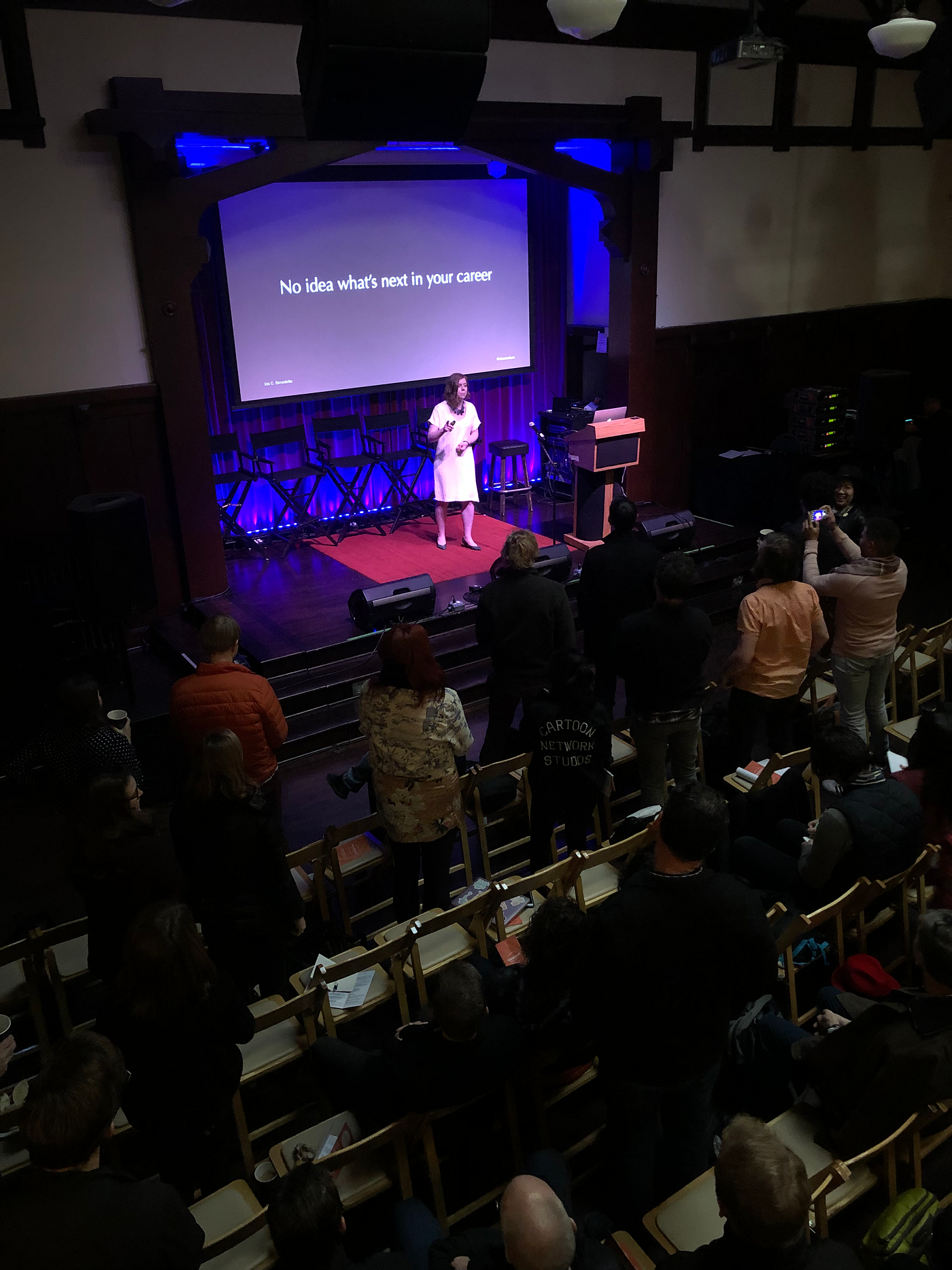
Meanwhile, Haley Cooper and J. Cameron Cooper, Co-Artistic Directors of Strange Bird Immersive and creators of the award-winning The Man From Beyond discussed how their immersive theatre-escape room hybrid experience could cause player dissonance and unease. They found themselves working with two mediums which are fundamentally at odds with one another: one form is audience-driven, whereas the other is performer-driven. As creators, they had to find the delicate balance to hold the audience’s attention and guide them along the story while allowing both genres to shine.
And Ida Benedetto, author of the influential and ground-breaking Patterns of Transformation, took the audience in a different direction. In a participatory exercise, she asked the audience to stand up if “you love what you’re doing.” Next, she asked the crowd to remain standing “if you have no idea what’s next in your career.” Much of the room responded to both calls to action.
She told us, “you’re the unconscious innovators…you’re fully in the present.”
4. As participants demand more agency, we can look to game design for help
Sean Stewart, one of the inventors of the alternate reality game format and currently a Creative Director at Magic Leap remarked, “audience used to mean ‘to hear’ but now needs to have way more words attached.” As audiences for immersive become initiated and demand deeper experiences, so along comes the desire for more ability to make meaningful choices during immersive experiences.
Game design can help inspire immersive creators to innovate in this space. For example, Samantha Gorman and Tanya Leal Soto of experimental game-virtual reality-art studio Tender Claws kicked off their talk with their two main tenets of design:
- Be specific to the medium (by asking how that medium’s affordances and constraints offer unique opportunities for directors and players).
- Consider that interactions can happen at any time: the player has the choice and ability to affect the outcome.
By designing with both of these principles in mind from the start, Tender Claws is able to create work that feels live, organic, and spontaneous, whether the characters are algorithmic or live (as in their most recent work, The Under Presents, which used both improv actors and live musicians).
IndieCade co-founder and Northeastern professor Celia Pearce spoke about her Playable Theatre project where she is currently studying the problem of agency in immersive, performative work; she also went on to cover the similarities between theatre and games and the aspects of game design where (quite frankly) immersive theatre often fails at. Theatre-makers can and should consider leveraging the tools games use in training the audience, in particular, including but not limited to: providing scaffolding, active (versus passive) on-boarding, clearly communicating the player’s role in the game, providing a tutorial “level,” and planning for unanticipated, emergent behavior.
“Hire a game designer,” exclaimed Celia to the packed room. “If it’s good enough for Meow Wolf, it’s good enough for you.”
And what happens when the player doesn’t behave as expected? Well, the folks from Strange Bird Immersive talked about the approach they take in their Man From Beyond experience which mashes up an escape room with immersive theatre book-ends. As performers, the Coopers found that displaying even more vulnerability when a player misbehaved worked best at redirecting their efforts. A player may mistreat something they believe is an automaton, but back off when faced with another human.
And the role of the audience was also echoed in Jenni Cook, Head of Production at Dreamscape Immersive’s talk, as she discussed their multi-sensory social virtual reality adventures. She mentioned one of the questions that kills most pitches that she sees is: “We [at Dreamscape] ask if you have to play a role in the story. Who can the guest be? How can they affect the story?”
If the creators don’t have an answer, it’s back to the drawing board.

5. Immersive can look to LARP for tools and frameworks around consent, safety, and participation
Live action roleplaying expert, CEO of Participation Design Agency, and author Johanna Koljonen exploded minds at the Immersive Design Summit when discussing how she approaches designing live action roleplaying experiences. (If you would like your mind similarly blown, check out her many talks on YouTube.)
Johanna introduced the concept of the “alibi for interaction”: the way participants know they won’t be shamed for participating, which can be created through narrative structures. Why? Because an alibi is the invitation to engage and do things that might be otherwise considered embarrassing. And because if players don’t feel safe, they can’t be brave. Agency alone is only the “theoretical possibility” that action can be taken; you need an “alibi” to have an excuse to play.
Johanna also talked about the fascinating Nordic LARP approach of “playing to lose” because it makes the stories better, a significant shift from many game players’ mindsets who are often focused upon winning (and that playing to lose is not something that is common to US-designed experiences). How can we encourage our participants to work together to create a more epic story rather than focusing on a win state?
And Johanna’s single takeaway for attendees of the Summit?
“If your participants aren’t doing what you want them to do, it’s not your participants who are wrong.”
6. Location-based entertainment is stealing from immersive theatre, but also expanding the magic circle wider and wider
Jae Lee and Yvonne Chang of the multi-use live experience space Wildrence spoke of using their signature blue front door as a portal to other experiences, having hosted everything from site-specific dance to a magic show. They view their space more as a “game console” and the different events as “cartridges” that can be popped in and out. And by curating a variety of experiences that leverage the same space, they’ve created a fanbase that returns time and time again to try out new things.
Ethan Stearns, Executive Producer at MWM Immersive, spoke of setting the tone for a virtual reality experience and how the participant’s headspace can drastically inform their experience once inside the headset. He’s brought these ideas to life in two contrasting but equally powerful experiences, the chilling Carne y Arena which begins in a refrigerated holding cell; as well as the ghostly Chained which whisks users into a Victorian-era home. By focusing upon the participant’s environment before they enter the VR experience, people will focus less on the details that jerk them out of immersion like a lower resolution display.
It’s fascinating that even as location-based virtual reality takes priming cues from immersive theatre, it also remixes it and improves upon it with experiences like Chained — where actors wearing motion capture suits can interact with viewers in the same virtual world, including objects you can touch in VR.
And similarly, Jenni Cook of Dreamscape spoke of how the Dreamscape lobby area at their storefront in Los Angeles is designed to feel like an old-fashioned railway station, to communicate how the user is about to go on a strange, unusual journey to another realm; “we don’t advertise with headsets,” she mentioned, as the focus is on the story, the adventure the participant is able to go on, and it’s always an adventure that cannot be replicated in real life.
So just as immersive theatre shows often begin before the attendee purchases a ticket or arrives at the venue, successful location-based VR experiences extend their story words outside the goggles and focus less on the technology. And like Chained, their experiences use real world senses to deepen immersion. In their case, Dreamscape might use rumbling floors, water spritzed on attendees, directional wind, and smell, to make the experience even more believeable.
Nowhere did this ring truer than during Sean Stewart of Magic Leap’s presentation where he challenged the room to create the real-life Hogwarts and Narnias of our collective childhoods in people’s living rooms. His vision? An ongoing, episodic narrative with characters that could be overlaid onto his own home (through the use of an AR headset) and where the story could unfold over the course of time.
He said to the rapt audience, “‘Home theater’ is not going to mean the same thing in five years. What people in this room are going to be building is home ‘theater.’ All the stuff you guys are working so hard on building for location-based entertainment is going to be in people’s houses in five years.”
7. And immersive can go beyond just mere entertainment

Nowhere was the push for immersive to have a greater impact evident more than in the panels curated by Mikhael Tara Garver and 13Exp (a new experiential social impact entertainment studio), which brought together a diverse set of experts across fandom, government, performing arts, visual art, and social justice, to join together with immersive as the connective tissue.
“How do we make artwork that goes beyond presenting a problem?” asked artist Muna Ahmed during the panel, challenging the crowd. Terry Marshall of Wakanda Dream Lab told us of his work helping everyday people become world-builders, saying, “when we showed them how, they realized they do it all the time.” Geoffrey Jackson Scott of Peoplmovr stunned the crowd when he said, “If you’re not at the table, you’re on the menu.” And Shawn Taylor reminded us that, “R. Buckminster Fuller said you don’t change things by changing the old model. You create a new model to make the old one obsolete.”
As Ida Bendetto said so eloquently in her opening keynote, “There’s something about immersive design and experience design that we can end up writing down to the metal of the human experience…. We can use our art form of immersive design to really address the core needs of society.” Benedetto also ended her session with the provocation, “what do we as a culture, as individuals, as a society need right now? How can immersive arts be in service of that?”
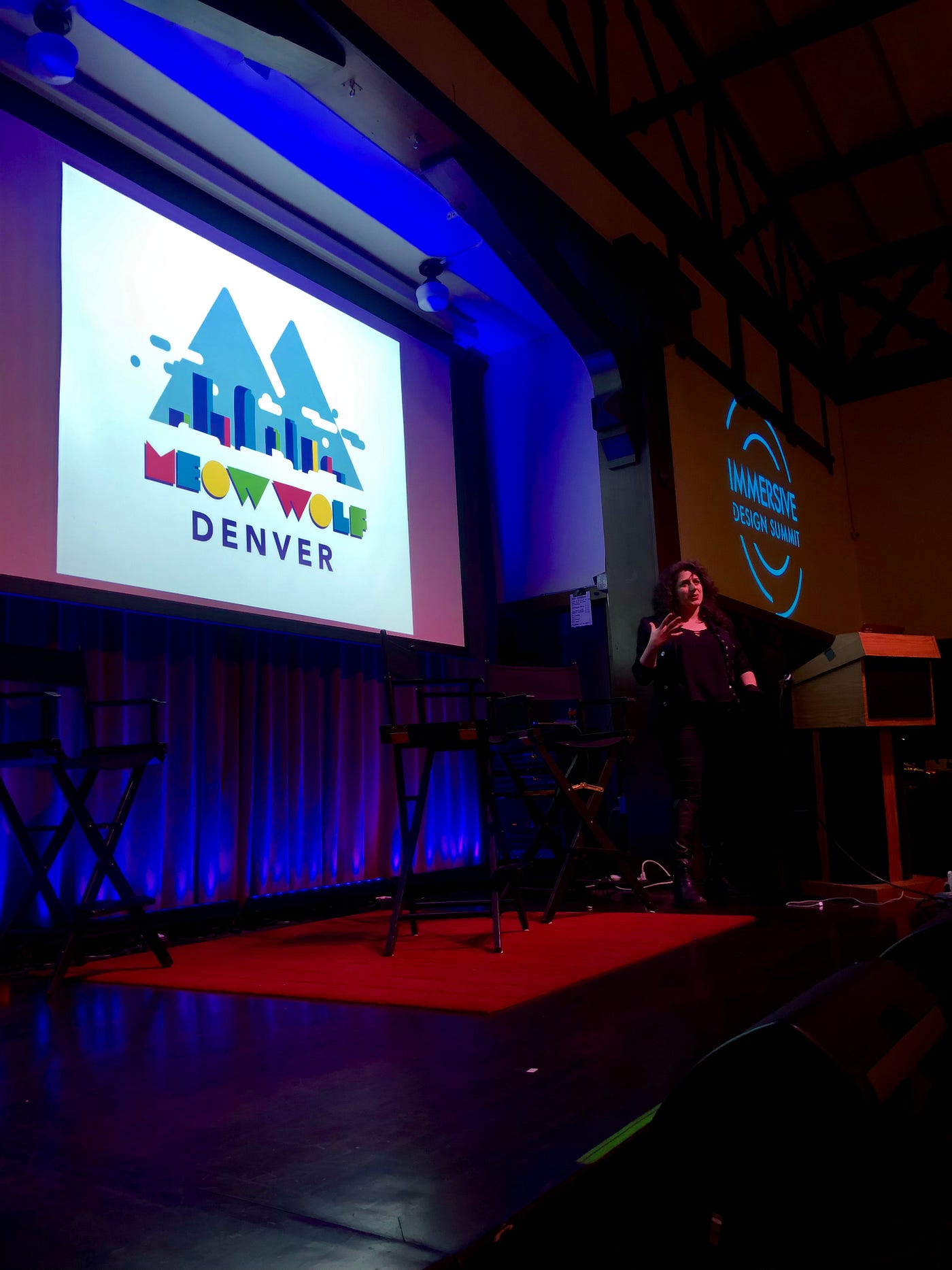
And in her closing speech, Jenny Weinbloom of Meow Wolf echoed this sentiment, proclaiming that immersive can be seen as a “rehearsal for resistance” and can be viewed as an “inherently anti-authoritarian” medium. She asked, “Does the work that we’re creating have to have the same rules as the world that we’re living in?”
After all, as builders of worlds, immersive designers have the power to choose different rules. When designing these moments of connection, immersive practitioners can choose not to merely echo the power structures of existing society or to reinforce deeply ingrained beliefs and stereotypes.
We can choose instead to try to build something new, a better reality — one to reflect a more just, more loving world. As Aisha Shillingford of Wakanda Dream Lab said, “When we say another world is possible, it’s difficult to imagine it without experiencing it.” Perhaps experience designers can help with building that new reality, one brick at a time. The Immersive Design Summit only helps lay the foundation; it’s up to us to build the structures.
The Immersive Design Summit 2019 was held February 22–23, 2019. Learn more about the Immersive Design Summit.
NoPro is a labor of love made possible by our generous Patreon backers: join them today!
In addition to the No Proscenium web site, our podcast, and our newsletters, you can find NoPro on Twitter, Facebook, YouTube, Instagram, in the Facebook community Everything Immersive, and on our Slack forum.
Office facilities provided by Thymele Arts, in Los Angeles, CA.


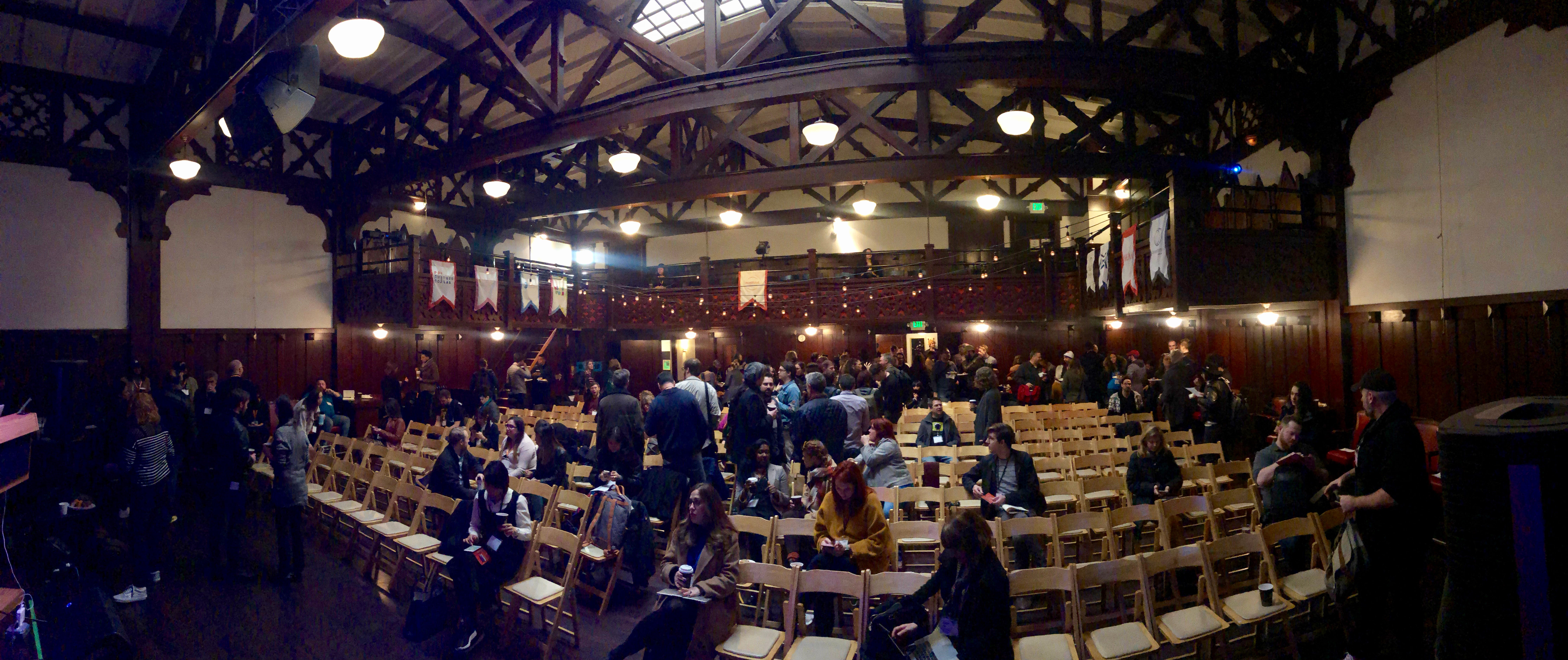





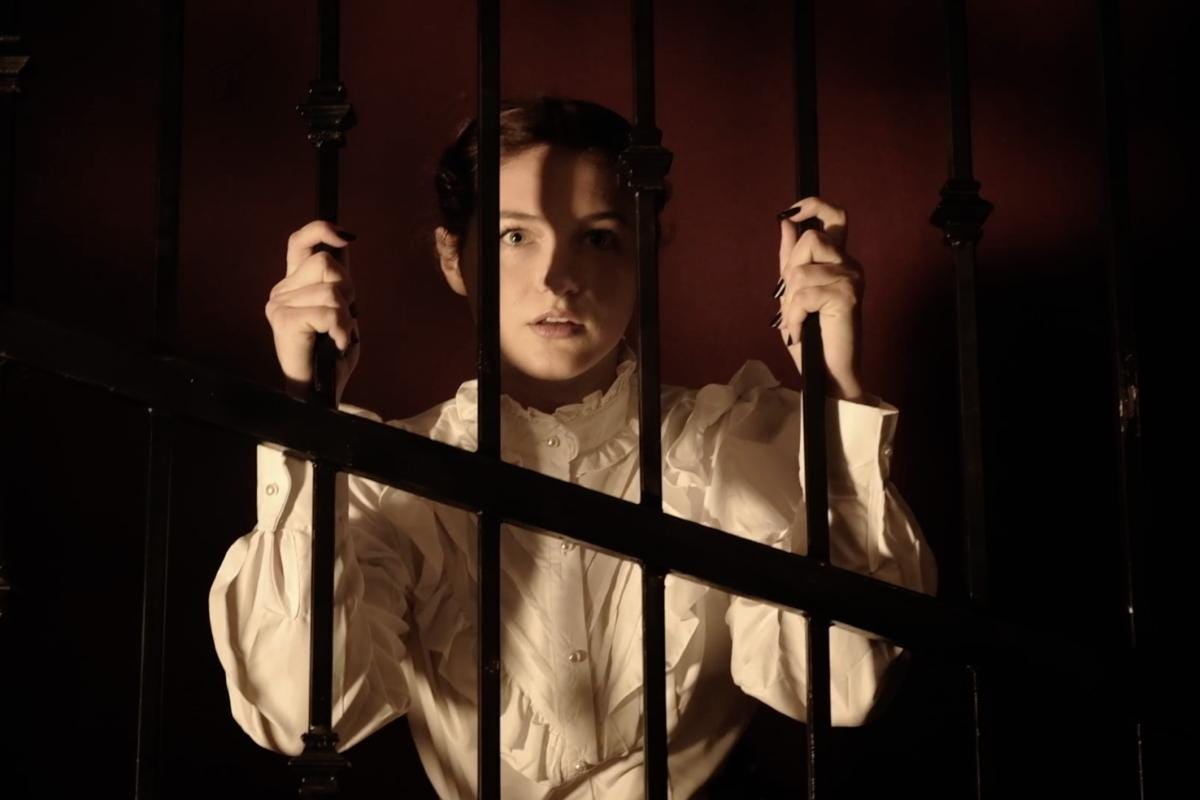





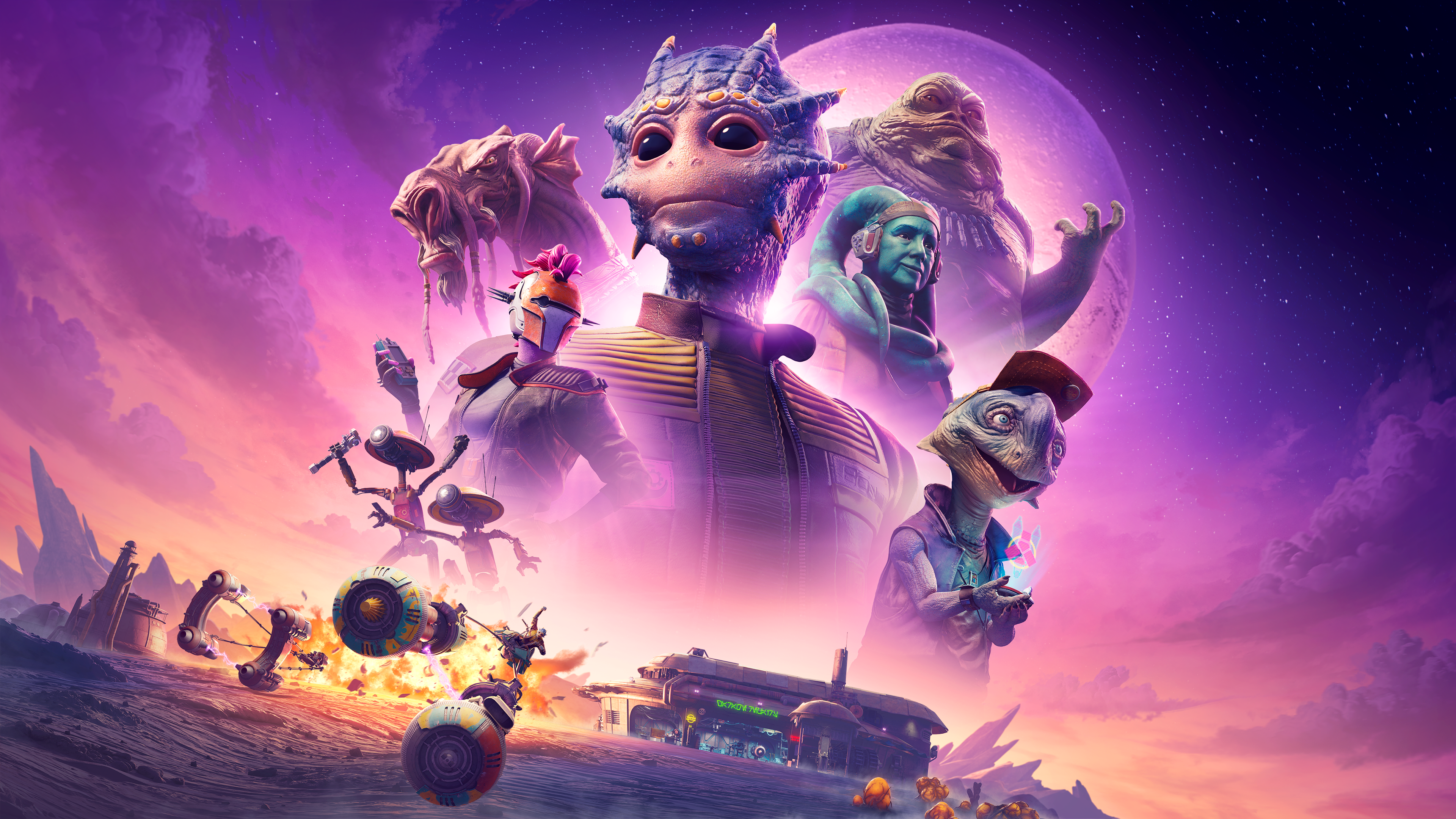
Discussion